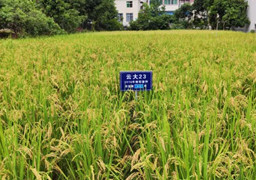[GT] ыЄы
ь ьь ьЇьь ььАьБъГМ ыь
ь ьЌы Ѕ
By Shilai Zhang, NATURE SUSTAINABILITY, November 7, 2022
ьИыЅъА ьыьЌыЅМ ььэ ьЇ ьН 9,000ы
ыЇь, ьД ыьЌъА ъАьъИА ььАьБ ыЉДьь эА ыьНь ьДыЃЈъГ ьыЄ. тыЄьДьВ ььЄэ
ьИьДыЙыЌэА(Nature Sustainability)т ь ыь ыАэы ьыЁьД ьАъЕЌь ыАыЅДыЉД, ьЄъЕ ыЈыЖь ьэыІЌьЙД ьАъАыЄьь ыЄы
ь ь ьЌыААыЅМ ьыэ ыъВНэь , ъВНь ь , эъВНь ъВАъГМь ьАыь ъИАыЁь ыГДьЌьЃМъГ ьыЄ.
ыЄы
ь ыВМыЅМ ьБээы ъВь ъВНь ь ьМыЁ ь ыІЌэъИА ыыЌИь ыыЏМыЄь ьД ыВМыЅМ ь ээъГ ьыЄ. 1ы
ь ы ыВ ьЌьЇ ььы ыыЏыЁ ыЇь ы
Иыы ЅъГМ ьъАь ь ьНэ ь ьыЄ.
ьД ыЄы
ь ыВМы ььььА 1ы
ь ыВМь ьэыІЌьЙДьА ьМь ыЄы
ь ыВМыЅМ ъЕыААэьЌ ъАыАы ъВьДыЄ. ьАъЕЌэь ь ь ь ыъЕЌыЅМ эьЉэьЌ 2007ы
ь ь ыЇэ ьЁьЂ
ь ьыГэъГ , 2016ы
ь ыъЗыЊЈ эьЅ ьЄэь ыЈээыЄ. ъЗИыІЌъГ 2018ы
ь PR23ьДыМы ьЕьДь ьь
ьЉ ыЄы
ь ь эьЂ
ь ьЖьэыЄ.
ьАъЕЌэь ьЄъЕ ыьЅьь 1ы
ь ьъГМ эЈъЛ ыЄы
ь ьь ьь ьБь ьАъЕЌэы ыА 5ы
ь ыГДыыыА, ыЊ ъАьЇ ььИ ьЌэь ь ьИэыЉД ыЄы
ь ь ьэыь ьВь 4ы
ыь 1ы
ь ьъГМ ыьМэыЄ. ыЄьэ ььИьМыЁ ьИэД 5ы
ьЇИыЖэА ьэыьД ыЈьДьЇъИА ььэыыА, ьДь ьАъЕЌьыЄь 4ы
эь ыЄы
ь ьь ыЄь эьЂ
э ъВь ъЖьЅэыЄ. ьЄьэ ъВь ъГь ыЇыЄ ьЈыЅМ ыПыІД эьъА ььъИА ыыЌИь ыЄы
ь ыВМыЅМ ьЌыААэы ыыЖыЄь ы
Иыы Ѕь ъБАь 60% ь ъВ эЌь
эъГ ьЂ
ь, ыЙыЃ ыА ъИАэ эЌь
ыЌМь ыыЕ ь ыА ь ыыЅМ ь ъАэ ъВьМыЁ ыэыЌыЄ.
ыЄы
ь ьь ъВНь ь ьДь ь ьАъЕЌ ьЇьь ыАыМ ыЄыЅДьЇыЇ, ъЗИ ьДьЕь ьАъА ьыГДыЄ 17%ьь 161% ы ыь ъВАъГМыЅМ ыьЖэыЄ. ыъЕАыЄы ыЄы
ь ыВМъА эДьЖЉьМыЁ ьИэД ьМьь ьМыЁ ьэы ъАьыЅМ ъВЊьы ьъИАь ьЅьььы ыыЖыЄь ьЌь э 1ы
ь ьыЌМь ьЌыААэы ъВыГДыЄ ы эА ъВНь ь ььЕь ьЛь ъВьМыЁ ыэыЌыЄ.
ьАъЕЌэь ыьЅ э
ьЄэИыЅМ ъБАьГ ьЄъЕъГМ ьАъАыЄьь ьь
ьЉ ь эьМыЁ ьИ ъАьЇ ыЄы
ь ь эьЂ
ь ьЖьэъГ , ыьМэ эы ь ь ь ыъЕЌыЅМ ьЌьЉэьЌ ьЂь эЅ, ьЇыГ ь эьБ, ъАы ыДьБъГМ ъАь ыАыьЇэ эЙьБь ьД ьыЁьД ьыЌМь ь ьэъВ ыь
эьЌ ь ьИъГь ьМыЁ ьД эьЂ
ь ыь
ыВьыЅМ эьЅэ ъГэьДыЄ.
ыЄы
ь ыВМь эъВНь ьДь ь ыэ ьДъИА ьАъЕЌ ъВАъГМы эьЌъЙьЇ ыЇЄьА ьИьь ьДъГ ь ыЇэыЄ. ыЄыЇ ыЄы
ь ыВМь ь ьВДь ьИ ь ьЌы Ѕь ьДэДэъИА ьэД ьЖъАь ьИ ьАъЕЌъА ы ьэы ьь ьДыЄ.
- NATURE SUSTAINABILITY, November 7, 2022, тSustained productivity and agronomic potential of perennial rice,т by Shilai Zhang, et al. © 2022 Springer Nature Limited. All rights reserved.
To view or purchase this article, please visit:
[GT] Sustained Productivity and Agronomic Potential of Perennial Rice
By Shilai Zhang, NATURE SUSTAINABILITY, November 7, 2022
After more than 9,000 years rice farming has suddenly made a great leap forward in terms of productivity. A new report in the journal Nature Sustainability chronicles the agronomic, economic, and environmental outcomes of deploying perennial rice cultivation in southern China and Uganda.
Farmers are adopting the new perennial rice because itтs economically advantageous for them to do so. By not having to plant twice a year, they save a lot of labor and time.
The researchers developed perennial rice through hybridization, crossing an Asian domesticated annual rice with a wild perennial rice from Africa. Taking advantage of modern genetic tools to fast-track the process, the team identified a promising hybrid in 2007, planted large-scale field experiments in 2016, and released the first commercial perennial rice variety, called PR23, in 2018.
The international research team spent five years studying perennial rice performance alongside annual rice on farms in China. With few exceptions, perennial rice yield was equivalent to annual rice over the first four years. Yield began to drop off in the fifth year due to various factors, leading the researchers to recommend re-sowing perennial rice after four years.
Importantly, because they didnтt have to plant each season, farmers growing perennial rice put in almost 60% less labor and spent roughly half as much on seed, fertilizer, and other inputs.
The economic benefits of perennial rice varied across study locations, with profits ranging from 17% to 161% higher than annual rice. And even at times and places when perennial rice suffered temporary yield dips due to pests, farmers still achieved a greater economic return than by growing the annual crop.
Although theyтve already conducted on-farm testing and released three perennial rice varieties as commercial products in China and one in Uganda, the researchers arenтt done refining this crop.
They plan to use the same modern genetic tools to quickly introduce desirable traits such as aroma, disease resistance, and drought tolerance into the new crop, potentially expanding its reach across the globe.
While early findings on the environmental benefits of perennial rice are impressive and promising, more research and funding are needed to understand the full scope of perennial riceтs potential.
- NATURE SUSTAINABILITY, November 7, 2022, тSustained productivity and agronomic potential of perennial rice,т by Shilai Zhang, et al. © 2022 Springer Nature Limited. All rights reserved.
To view or purchase this article, please visit:







